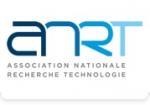Recherche de la production par paire de bosons de Higgs dans le canal multilepton à 13.6 TeV avec le détecteur ATLAS // Search for di-Higgs production in the multilepton channel with the ATLAS detector using 13.6 TeV data
| ABG-133705 | Sujet de Thèse | |
| 07/10/2025 | Financement public/privé |
CEA Paris-Saclay Groupe Atlas (ATLAS)
Saclay
Recherche de la production par paire de bosons de Higgs dans le canal multilepton à 13.6 TeV avec le détecteur ATLAS // Search for di-Higgs production in the multilepton channel with the ATLAS detector using 13.6 TeV data
- Physique
- Terre, univers, espace
Physique des particules / Physique corpusculaire et cosmos
Description du sujet
Dans le Modèle Standard (MS), le champ de Higgs est à l’origine de la brisure de symétrie électrofaible, conférant ainsi leur masse aux bosons W et Z. La découverte du boson de Higgs en 2012 au LHC a permis de confirmer expérimentalement l’existence de ce champ. Malgré des études approfondies, l’auto-couplage du boson de Higgs reste non mesuré, bien qu’il soit essentiel pour comprendre la forme du potentiel du Higgs et la stabilité du vide de l’univers. L’étude de la production par paires de bosons de Higgs (di-Higgs) est la seule manière directe d’accéder à ce paramètre et d’obtenir des informations clés sur la transition de phase électrofaible après le Big Bang. La production de di-Higgs est extrêmement rare (section efficace ~ 40 fb pour des collisions proton-proton avec une énergie de 13,6 TeV). Parmi les états finaux possibles, le canal multilepton est prometteur grâce à sa signature cinématique distinctive, bien que complexe en raison de la diversité des topologies et des bruits de fond. Les avancées récentes en intelligence artificielle, en particulier les architectures de type transformer respectant les symétries physiques, ont amélioré de manière significative la reconstruction d’événements complexes dans des canaux tels que HH?4b ou or HH?bbtt. Appliquer ces techniques au canal multilepton offre un fort potentiel pour améliorer la sensibilité. Ce projet de thèse se concentrera sur la recherche de la production de di-Higgs dans l’état final multilepton avec l’ensemble des données du Run 3 d’ATLAS à 13,6 TeV, en s’appuyant sur les travaux en cours des équipes de l’Irfu sur le canal ttH multilepton afin de développer des méthodes avancées d’analyse et de reconstruction basées sur l’intelligence artificielle. L’objectif du projet est d’approcher la sensibilité du MS sur l’auto-couplage du boson de Higgs.
------------------------------------------------------------------------------------------------------------------------------------------------------------------------
------------------------------------------------------------------------------------------------------------------------------------------------------------------------
In the Standard Model (SM), the Higgs field is responsible for the breaking of the electroweak symmetry, thereby giving mass to the W and Z bosons. The discovery of the Higgs boson in 2012 at the LHC provided experimental confirmation of the existence of this field. Despite extensive studies, the self-coupling of the Higgs boson remains unmeasured, yet it is crucial for understanding the shape of the Higgs potential and the stability of the universe’s vacuum. Studying Higgs pair production (di-Higgs) is the only direct way to access this parameter, providing key insights into the electroweak phase transition after the Big Bang. Di-Higgs production is extremely rare (cross-section ~40 fb for proton-proton collisions at a centre-of-mass energy of 13.6 TeV), and among its possible final states, the multilepton channel is promising due to its distinctive kinematics, though complex due to diverse topologies and backgrounds. Recent advances in artificial intelligence, particularly transformer-based architectures respecting physical symmetries, have recently significantly improved event reconstruction in complex Higgs channels such as HH?4b or HH?bbtt. Applying these techniques to the multilepton channel offers strong potential to enhance sensitivity. This PhD project will focus on searching for di-Higgs production in the multilepton final state with the full ATLAS Run 3 dataset at 13.6 TeV, leveraging the group’s ongoing ttH multilepton work to develop advanced AI-based reconstruction and analysis methods. The projet aims to approach SM sensitivity for the Higgs self-coupling.
------------------------------------------------------------------------------------------------------------------------------------------------------------------------
------------------------------------------------------------------------------------------------------------------------------------------------------------------------
Pôle fr : Direction de la Recherche Fondamentale
Département : Institut de recherche sur les lois fondamentales de l’univers
Service : Service de Physique des Particules
Laboratoire : Groupe Atlas (ATLAS)
Date de début souhaitée : 01-10-2026
Ecole doctorale : PHENIICS (PHENIICS)
Directeur de thèse : DELIOT Frédéric
Organisme : CEA
Laboratoire : DRF/IRFU
------------------------------------------------------------------------------------------------------------------------------------------------------------------------
------------------------------------------------------------------------------------------------------------------------------------------------------------------------
In the Standard Model (SM), the Higgs field is responsible for the breaking of the electroweak symmetry, thereby giving mass to the W and Z bosons. The discovery of the Higgs boson in 2012 at the LHC provided experimental confirmation of the existence of this field. Despite extensive studies, the self-coupling of the Higgs boson remains unmeasured, yet it is crucial for understanding the shape of the Higgs potential and the stability of the universe’s vacuum. Studying Higgs pair production (di-Higgs) is the only direct way to access this parameter, providing key insights into the electroweak phase transition after the Big Bang. Di-Higgs production is extremely rare (cross-section ~40 fb for proton-proton collisions at a centre-of-mass energy of 13.6 TeV), and among its possible final states, the multilepton channel is promising due to its distinctive kinematics, though complex due to diverse topologies and backgrounds. Recent advances in artificial intelligence, particularly transformer-based architectures respecting physical symmetries, have recently significantly improved event reconstruction in complex Higgs channels such as HH?4b or HH?bbtt. Applying these techniques to the multilepton channel offers strong potential to enhance sensitivity. This PhD project will focus on searching for di-Higgs production in the multilepton final state with the full ATLAS Run 3 dataset at 13.6 TeV, leveraging the group’s ongoing ttH multilepton work to develop advanced AI-based reconstruction and analysis methods. The projet aims to approach SM sensitivity for the Higgs self-coupling.
------------------------------------------------------------------------------------------------------------------------------------------------------------------------
------------------------------------------------------------------------------------------------------------------------------------------------------------------------
Pôle fr : Direction de la Recherche Fondamentale
Département : Institut de recherche sur les lois fondamentales de l’univers
Service : Service de Physique des Particules
Laboratoire : Groupe Atlas (ATLAS)
Date de début souhaitée : 01-10-2026
Ecole doctorale : PHENIICS (PHENIICS)
Directeur de thèse : DELIOT Frédéric
Organisme : CEA
Laboratoire : DRF/IRFU
Nature du financement
Financement public/privé
Précisions sur le financement
Présentation établissement et labo d'accueil
CEA Paris-Saclay Groupe Atlas (ATLAS)
Pôle fr : Direction de la Recherche Fondamentale
Département : Institut de recherche sur les lois fondamentales de l’univers
Service : Service de Physique des Particules
Profil du candidat
master 2 en physique des particules ou équivalent
Postuler
Fermer
Vous avez déjà un compte ?
Nouvel utilisateur ?
Besoin d'informations sur l'ABG ?
Vous souhaitez recevoir nos infolettres ?
Découvrez nos adhérents
 CASDEN
CASDEN  Institut Sup'biotech de Paris
Institut Sup'biotech de Paris  SUEZ
SUEZ  Nokia Bell Labs France
Nokia Bell Labs France  Ifremer
Ifremer  Aérocentre, Pôle d'excellence régional
Aérocentre, Pôle d'excellence régional  ONERA - The French Aerospace Lab
ONERA - The French Aerospace Lab  Groupe AFNOR - Association française de normalisation
Groupe AFNOR - Association française de normalisation  MabDesign
MabDesign  CESI
CESI  ASNR - Autorité de sûreté nucléaire et de radioprotection - Siège
ASNR - Autorité de sûreté nucléaire et de radioprotection - Siège  Généthon
Généthon  TotalEnergies
TotalEnergies  Tecknowmetrix
Tecknowmetrix  PhDOOC
PhDOOC  ADEME
ADEME  ANRT
ANRT  MabDesign
MabDesign  Laboratoire National de Métrologie et d'Essais - LNE
Laboratoire National de Métrologie et d'Essais - LNE
